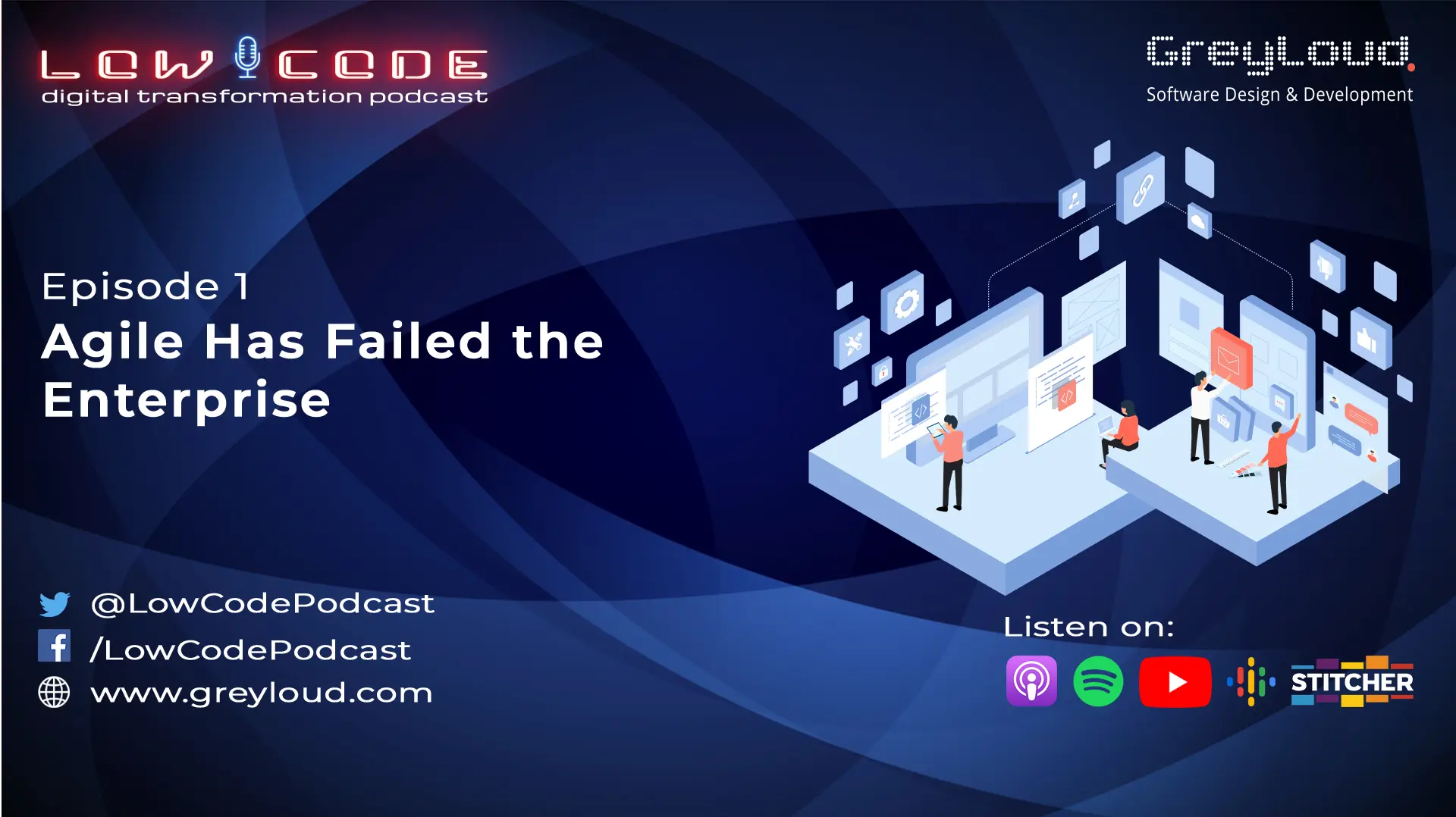In this episode, we discuss why the Agile Software Development methodology has failed large enterprises that leverage it for internal projects.
While we agree that Agile is undoubtedly the best software methodology available today for developing new innovative software, it suffers from a significant breakdown in development velocity once projects start getting to scale. New features start taking longer and costing more, which for startups is okay because they have a continually growing user on monetization base.
However, in the enterprise, these internal tools have a strict ceiling on the software's user base and economic value, meaning that ROI for development drops over time. Project stakeholders notice this, and the development teams and product managers find themselves in a situation where costs are exploding while velocity is grinding to a halt. The business loses patience with a methodology that cannot reliably offer a timeline or budget targets.
Low code comes to the rescue with tools that remove the overwhelming majority of development overhead, such as API updates, database optimization, etc. While velocity still decreases as projects grow, degradation is significantly less pronounced, even years into the future
Product managers can keep using agile throughout the project lifecycle and keep velocity high enough to appease business stakeholders while maintaining the flexibility needed to navigate the product development process without the constraints of fixed scope development.

